In the bustling heart of Milan, a barista expertly maneuvers the chrome handles of an espresso machine, the intense aroma of the brewing coffee mingling with the morning air. Halfway across the world, a sleepy student in San Francisco reaches for a freshly brewed pot of coffee, the robust smell offering a comforting start to the day. Two distinct experiences, united by a single, profound thread: the ubiquitous and captivating world of caffeine. Our focus? The Espresso vs Coffee debate, a long-standing showdown within the world of Java. This comprehensive exploration will journey through the flavors, origins, and brewing techniques of these two beloved beverages.
Whether you’re drawn to the concentrated intensity of a shot of espresso, or the mellow versatility of a cup of joe, understanding the nuances between them is key to appreciating your next caffeine fix. This showdown isn’t about determining a winner; instead, it’s about illuminating the unique characteristics of espresso and coffee and appreciating the different experiences each offer.
So, put on your barista apron, as we dive into the enticing world of caffeine in espresso vs coffee, the rich narratives of their origins, the art of their brewing techniques, and of course, the distinctive flavors that have turned these beverages into global sensations. Brace yourself, this journey promises to be as invigorating as your morning brew.
Espresso vs Coffee: Key Takeaway
- Historical Roots: A cup of joe, hailing from Ethiopia, and espresso, with its Italian roots, have both journeyed through centuries to become global beverages. Their historical narratives enrich our understanding and appreciation of these drinks.
- Flavor Profiles: The article provides a comprehensive comparison of the robust, intense flavor of espresso and the wide-ranging, versatile tastes of a cup of joe, emphasizing the influence of brewing methods on these flavor profiles.
- Brewing Techniques: Different brewing techniques yield varied results – mastering an espresso machine demands a specific skill set while coffee brewing methods offer a wider range of possibilities. The article shares barista tips to enhance your brewing experience.
- Caffeine and Health Aspects: Understanding the caffeine content in espresso vs coffee and their health implications can guide consumption habits. This piece addresses some common myths and offers valuable insights into the nutritional aspects of these beverages.
- Cultural Impact: Both beverages have had significant cultural impacts worldwide, from Italian rituals to the role of coffee shops in social dynamics. The article highlights how these beverages continue to influence our social interactions and lifestyles.
Coffee vs Espresso: Unpacking the Flavor Profiles
Delving into the world of these delectable beverages means entering a realm where flavor profiles are as diverse as the people who enjoy them. The richness of the coffee bean gives life to an extensive spectrum of flavors, providing an intriguing experience for coffee connoisseurs and casual drinkers alike.
The Robust Intensity of Espresso

Espresso stands out for its dense and robust flavor profile. Here’s a breakdown of the sensory experience:
- Acidity: A well-brewed espresso shot starts with a bright, acidic note. This initial taste is refreshing, offering a delightful contrast to the forthcoming flavors.
- Body: Following the acidic kick, the taste deepens, delivering a rich and complex middle characterized by an intense, deep flavor. It’s this heartiness that often differentiates espresso from other forms of coffee.
- Aftertaste: The final act in the espresso flavor symphony is a lingering aftertaste. This generally presents itself as a caramel or chocolatey undertone, providing a smooth and sweet conclusion to each sip.
The Versatile Tastes of Coffee

Coffee, in its broader sense, provides a versatile palette of flavors, influenced by the type of beans used and the roasting process. Here’s what shapes the diverse flavors of this lovely drink:
- Variety of Beans: The type of the bean significantly influences the taste of the brew. Arabica often presents a gentle, sweet flavor with hints of fruit or berries, while Robusta offers a stronger, more intense profile with a noticeable nutty or chocolaty taste.
- Roasting Process: The roast level is crucial to the flavor profile. Light roasts often highlight the unique characteristics of the beans, revealing vibrant, acidic brews with floral or fruity notes. Darker roasts, on the other hand, provide a bolder flavor, characterized by a profound bitterness and toasted, sometimes chocolaty undertones.
How Brewing Methods Impact Flavor
The method of brewing plays a pivotal role in determining the final taste of your cup of joe. Here’s how different brewing techniques influence flavor:
- Drip Brewing: This widely used method provides a clean, balanced cup of joe, allowing the subtle flavors to be clearly distinguishable.
- French Press: The longer steeping process of the French press leads to a full-bodied brew, carrying robust flavors and offering a richer mouthfeel.
- Pour-over Methods: Techniques like the Chemex or Hario V60 deliver a bright, clean brew that highlights the unique flavors of the beans.
- Cold Brew: In this method, coffee grounds are steeped in cold water over a long period, resulting in a brew that is smooth, naturally sweet, and less acidic compared to hot brewing methods.
Through this exploration of espresso and coffee, you’ll come to appreciate the fascinating tapestry of flavors they offer. Every brew carries a story – from the farm where the beans were grown, through the intricate processes that shaped its flavor, to the very cup you hold in your hands. Whether you’re a devotee of the potent espresso shot or a fan of a leisurely cup of joe, you are participating in a cherished global tradition that unites us all.
A Detailed Comparison: Espresso and Coffee Brewing
To truly understand and appreciate the Espresso vs Coffee distinction, one must delve into the intricacies of their brewing processes. Each method is marked by its unique set of principles, affecting everything from the type of beans used to the final taste.
Refining the Brewing Process
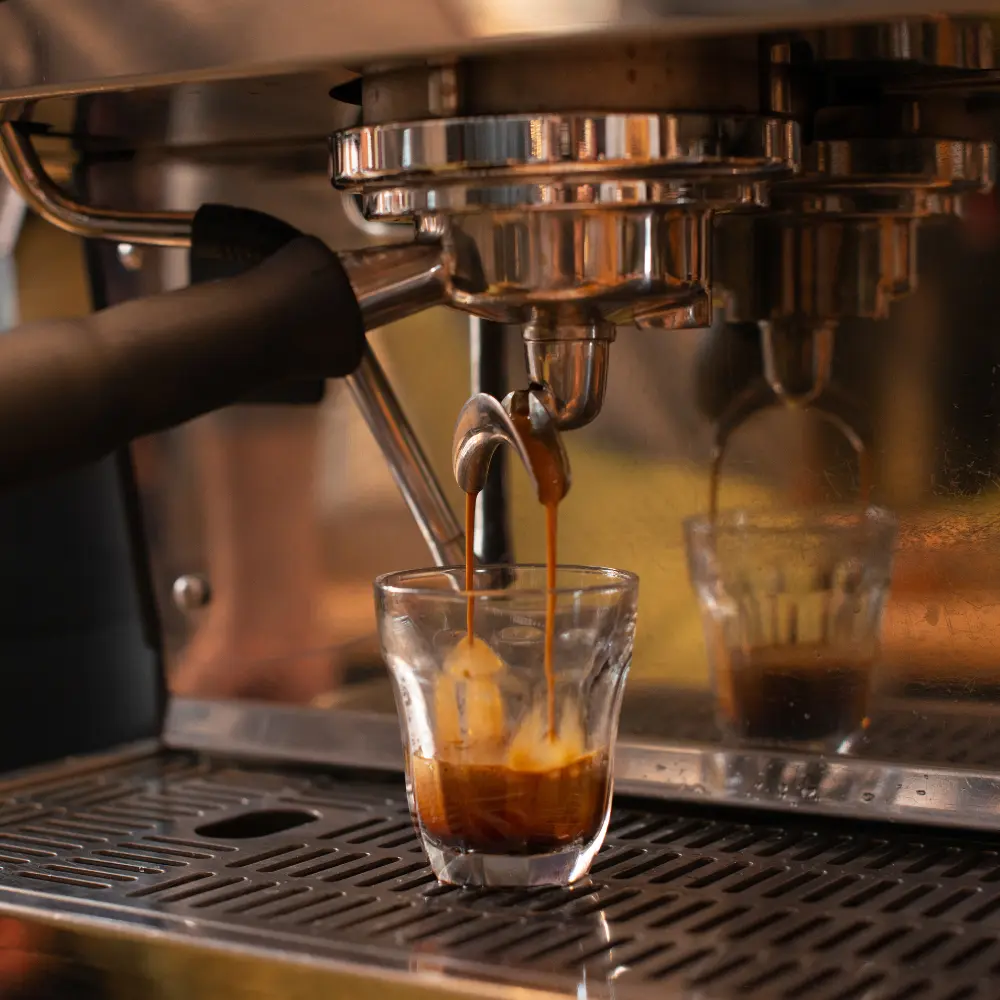
The brewing process, whether for espresso or coffee, significantly influences the beverage’s flavor, body, and overall experience.
- Espresso: Brewing an espresso involves forcing a small amount of nearly boiling water under pressure through finely ground beans. This method extracts the flavor in a concentrated form, resulting in a thick, rich shot topped with a layer of crema.
- Coffee: Traditional brewing methods, such as pour-over, drip, or French press coffee maker, involve steeping ground coffee in hot water. The water’s interaction with the grounds over a longer duration extracts a broader range of flavors, resulting in a beverage with a lighter body compared to espresso.
The Influence of Roast Levels
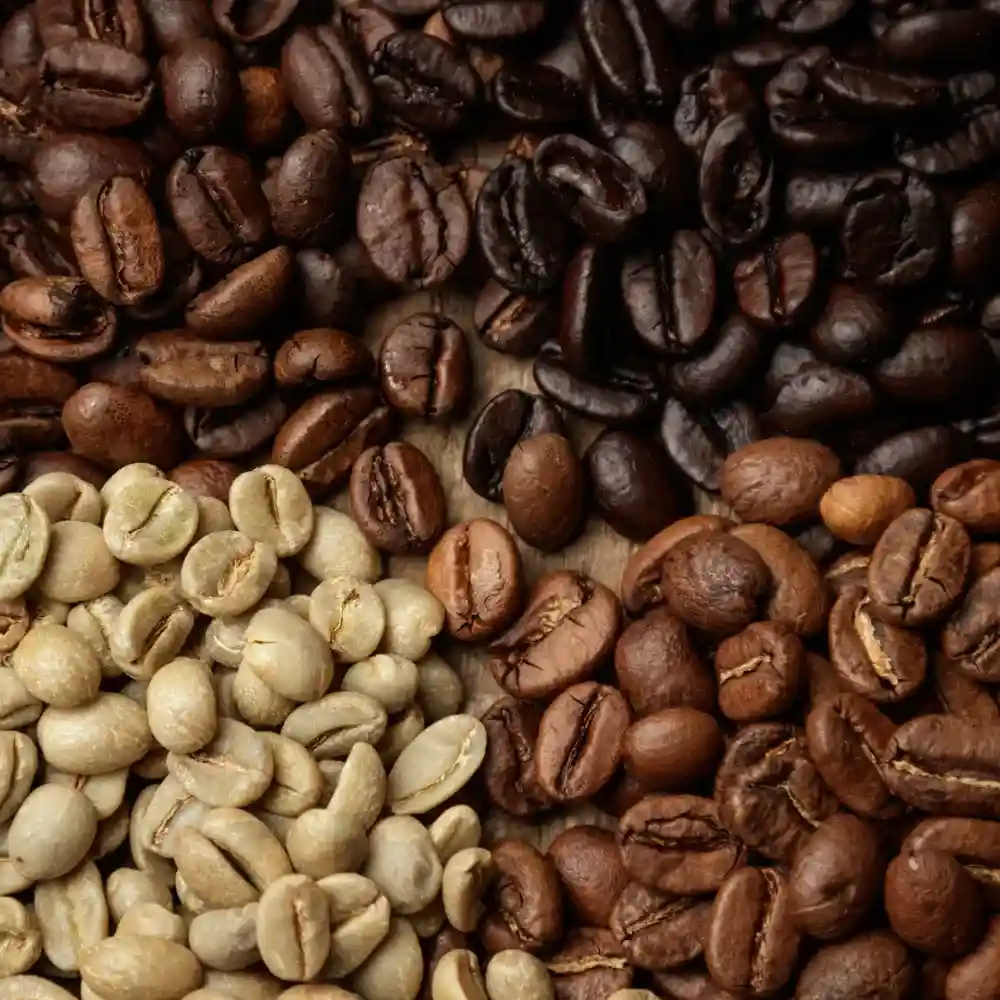
Coffee roast levels can substantially impact the taste of both espresso and coffee.
- Espresso: Typically, a darker roast is preferred for espresso. The roasting process caramelizes the sugars in the beans, creating a fuller-bodied and bolder flavor, ideal for the intense nature of espresso.
- Coffee: Depending on the brewing method and personal preference, both light and dark roasts can be used for regular coffee. Light roasts tend to retain more of the beans’ original flavors, resulting in a more complex and acidic taste profile. Dark roasts, similar to espresso, yield a fuller body and less acidity.
Espresso Beans vs Coffee Beans: A Matter of Choice
In reality, there is no such thing as an “espresso bean.” Espresso can be made from any type of bean, whether Arabica or Robusta, single-origin, or blend.
- Espresso Beans: What we often see labeled as “espresso beans” are generally darkly roasted beans, chosen for their ability to withstand the high-pressure brewing process of espresso.
- Coffee Beans: The choice of beans for regular coffee is often determined by the desired flavor profile and brewing method. A wide variety of roasts and origins can be used to achieve different taste nuances.
Grind Size and Its Impact

Grind size, the degree to which the beans are broken down, is another critical factor in the brewing process.
- Espresso: Espresso preparation requires a fine grind. The tiny coffee particles increase the resistance to water flow, enabling extraction under high pressure and resulting in a concentrated flavor.
- Coffee: Regular brewing of this beverage calls for a coarser grind than espresso. The larger particle size allows for a slower and more gradual extraction process, suitable for methods like the French press or drip brewing.
Both espresso and coffee have their unique attributes, from bean selection to brewing technique. It’s these differences that offer coffee enthusiasts a broad spectrum of flavors and experiences, enriching the journey of exploration.
Nutritional Aspects and Caffeine Content
Exploring the nutritional aspects of espresso and coffee reveals fascinating insights into their caffeine content, health implications, and common misconceptions. Let’s delve into these facets to better understand what lies beneath each tantalizing sip of these beloved beverages.
Espresso vs Coffee: Caffeine Showdown

When it comes to the caffeine in espresso vs coffee, many are surprised to learn that a standard serving of espresso generally contains less caffeine than a standard serving of drip coffee. Here’s how it breaks down:
- Espresso: A typical serving size for espresso is 1 fluid ounce (30 milliliters), and it contains about 63 milligrams of caffeine.
- Drip Coffee: A standard cup of joe is 8 fluid ounces (240 milliliters), containing approximately 95 milligrams of caffeine.
However, this comparison can be misleading because the serving size for espresso is much smaller. If you compare them on an ounce-to-ounce basis, espresso contains more caffeine, roughly 63 milligrams per ounce compared to drip coffee’s 12 milligrams. So, while a shot of espresso may give you a quicker jolt due to its higher caffeine concentration, a full cup of joe will typically give you more caffeine overall.
Health Benefits and Considerations of Coffee Consumption

Coffee and espresso, when consumed in moderation, offer a range of potential health benefits:
- Antioxidants: Both beverages are rich in antioxidants, which can protect against cellular damage and inflammation.
- Heart Health: Moderate consumption can be associated with a lower risk of heart disease.
- Neurological Benefits: The caffeine in coffee may reduce the risk of developing neurodegenerative diseases like Parkinson’s and Alzheimer’s.
- Physical Performance: Caffeine stimulates the nervous system, leading to enhanced physical performance.
However, it’s crucial to keep these points in mind:
- Caffeine Sensitivity: Individual responses to caffeine vary widely. Some people may experience restlessness, insomnia, or rapid heartbeat.
- Pregnancy and Health Conditions: Pregnant individuals, people with certain health conditions, and those sensitive to caffeine should limit their consumption. Learn more about coffee and pregnancy with our guide on: Can you drink coffee while pregnant?
- Add-Ons Count: The health impact of both beverages can change significantly depending on what you add to it. Cream, sugar, and flavored syrups can turn a healthy drink into a calorie-dense one.
Debunking Coffee and Espresso Myths
In the face of common misconceptions about coffee and espresso, it’s essential to separate fact from fiction:
- Myth: Espresso is highly caffeinated: As discussed, a standard serving of espresso contains less caffeine than a standard serving of coffee. The confusion arises from the higher caffeine concentration in espresso due to its smaller serving size.
- Myth: Coffee stunts your growth: There is no scientific evidence linking coffee consumption to inhibited growth. This old wives’ tale has been thoroughly debunked.
- Myth: Coffee leads to dehydration: While coffee has a mild diuretic effect, it does not lead to dehydration. In fact, the water in this beverage contributes to your daily fluid intake.
Understanding these nutritional aspects and caffeine content can guide informed choices about coffee consumption. As with many things, moderation is key, and how you enjoy both drinks should align with your taste preferences, lifestyle, and health considerations.
Origins and Historical Overview
The intertwining tales of both of these delectable beverages transport us through time, marking the passage of centuries with their evolving narratives. Each has a rich past, an exciting journey that led them from their origins to the cups we cherish today.
The Birth of Coffee: An Ethiopian Tale
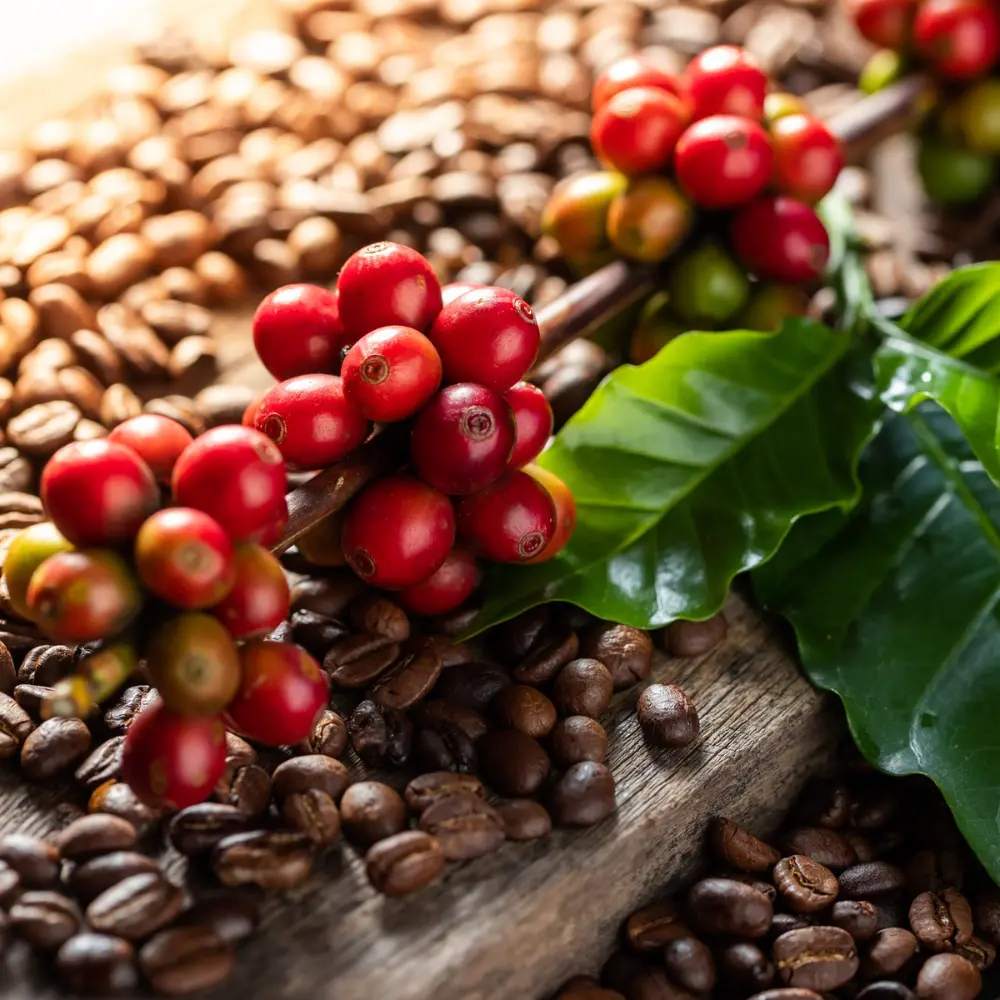
Coffee, an energizing brew that has been our companion for centuries, has origins that are shrouded in mystery and steeped in folklore. The tales of Kaldi, a 9th-century Ethiopian goat herder, serve as the backdrop to one of the most enduring myths of this beverage’s birth. Observing his flock prancing with an unusual vitality after consuming certain bush leaves and berries, Kaldi sparked the flame that would kindle humanity’s enduring relationship with this drink. Despite this tale’s widespread repetition, concrete historical evidence of its validity remains elusive, pointing to the mythical nature of our beloved brew’s beginnings.
The historical transmission of this delectable drink, however, presents a more concrete picture. Emergent accounts from the mid-15th century describe Yemeni Sufi circles using this beverage to maintain wakefulness during religious rituals. (1) With this, a new era in the history of this drink began. Introduced possibly from Ethiopia via trans-Red Sea trade, this delightful beverage became a commodity, its energizing properties deeply embedded in the socio-cultural fabric of Arabian society.
Espresso’s Italian Roots: A Century-Old Tradition
Espresso, the potent, full-bodied coffee shot, finds its roots in the dynamic culture of 18th-century Italy. This period saw numerous inventions aimed at enhancing and expediting the coffee brewing process. However, the true revolution occurred when an Italian barista, Luigi Bezzera, patented an improved version of the machine in 1901, giving birth to the modern espresso machine. (2)

This espresso machine streamlined the brewing process, using steam to force water through coffee grounds, resulting in a concentrated, full-flavored beverage. The invention resonated with the fast-paced lifestyle of Italian urban centers, initiating a new culture that would later spread worldwide. Whether it’s a quick espresso shot in a bustling Italian café or a creamy latte in a cozy Berkeley coffee shop, espresso’s influence on our modern coffee culture cannot be understated.
How Espresso and Coffee Conquered the World
From the coffee forests of Ethiopia and the bustling streets of Italy, both beverages embarked on a journey of global conquest. Trade routes, colonial expansion, and cultural exchange propelled these beverages far beyond their homelands, introducing them to new cultures and continents.
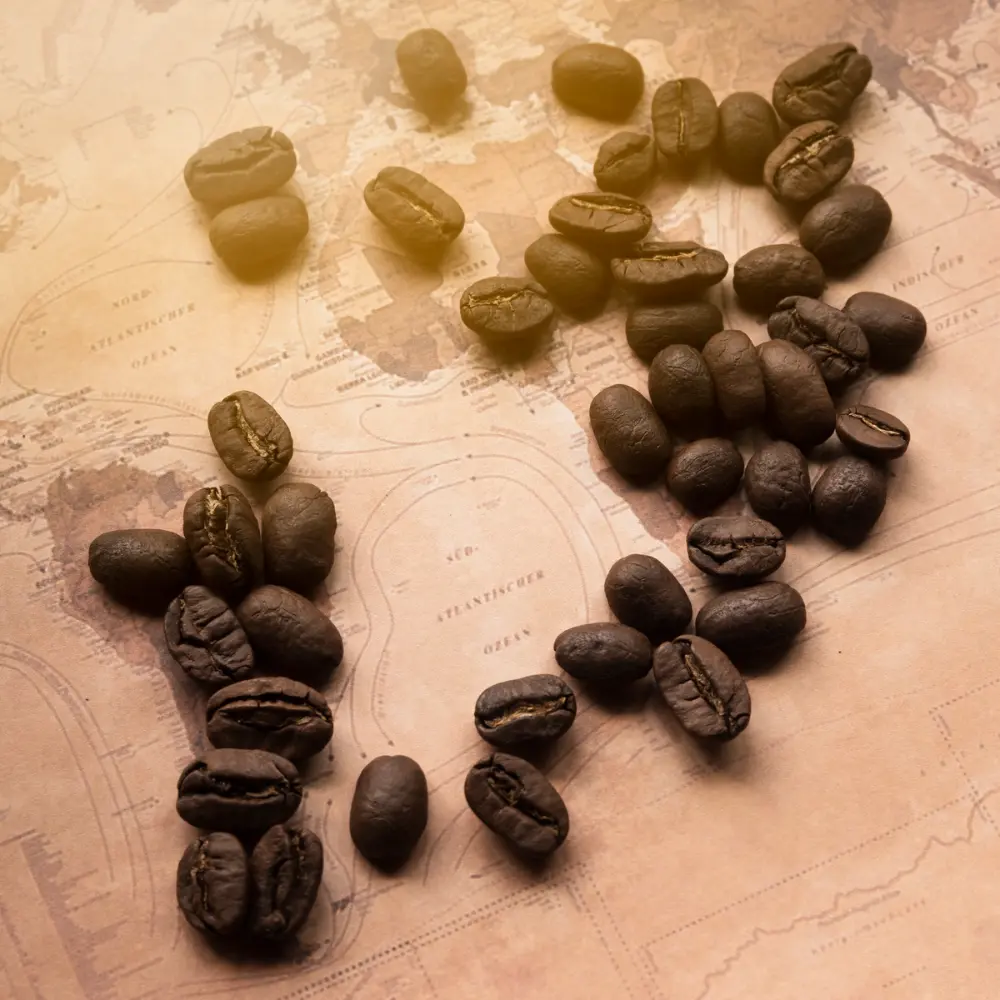
Coffee’s journey from the Middle East to Europe was facilitated by extensive trade networks and exploratory voyages. By the 16th century, it had taken root in the Middle East, Persia, Turkey, and North Africa. European travelers and traders then carried this beverage back home, transforming it from an exotic novelty to an everyday staple. This rapid spread was not without controversy, however, as Pope Clement VIII had to dismiss calls to ban coffee, a beverage perceived as a symbol of Islamic culture.
Espresso, with its concentrated flavor and efficient brewing process, resonated with urban societies. Italian immigrants, carrying their love for espresso to new lands, spread this culture globally. The growing popularity of coffee-based drinks like lattes and cappuccinos in the United States, combined with the rise of large coffee chains, further solidified espresso’s status in the world of this drink.
In today’s world, espresso and coffee are more than just beverages; they symbolize social interaction, global connectedness, and a shared experience that transcends borders. They are a testament to humanity’s ability to innovate, adapt, and appreciate the little joys of life – one cup at a time.
The Cultural Impact of Espresso and Coffee
The global love affair with espresso and coffee isn’t merely about their captivating flavors or invigorating effects. These beverages have woven themselves into the fabric of societies, influencing lifestyle, tradition, and social dynamics. Let’s explore the cultural significance of these lovely drinks in various contexts.
Espresso in Italian Culture

In Italy, the birthplace of espresso, the beverage is more than just a morning jolt of caffeine – it’s an integral part of the cultural landscape. Here are some insights:
- Daily Ritual: For many Italians, the day begins with a quick shot of espresso at the local bar, often consumed standing at the counter. The process of drinking espresso, albeit brief, sets the tone for the day.
- Espresso Etiquette: The question of how to drink espresso often arises for those visiting Italy. There, espresso is typically enjoyed without milk additives after breakfast time. The idea is to savor the purity of the espresso shot without distractions.
- Socialization: The act of drinking espresso often provides opportunities for socialization. In Italy, it’s common to have quick, spontaneous chats at the espresso bar with friends, colleagues, and even strangers.
Coffee’s Influence Around the Globe
As we turn our attention to coffee, its global influence is undeniable. Each region has its unique relationship with this delectable beverage, defined by traditional preparation methods, consumption habits, and societal norms:
- Middle East: This beverage’s origins trace back to the Middle East, where it was consumed in Sufi circles to stay awake for night prayers. Today, coffee (or “qahwa”) is a symbol of hospitality in many Middle Eastern cultures.
- Scandinavia: These countries consistently rank high in coffee consumption worldwide. The Swedish tradition of “fika” – a break involving a cup of joe and a sweet treat – emphasizes the social and restorative aspects of coffee drinking.
- Latin America: In countries like Colombia, Brazil, and Guatemala, this drink plays a crucial role not only culturally but economically, as these regions produce a significant portion of the world’s coffee supply.
The Role of Coffee Shops in Social Dynamics

The cultural impact of this drink extends to the physical spaces where it’s consumed. Coffee shops and cafes have become essential social hubs in many societies, serving a variety of functions:
- Community Gathering Places: From intellectual exchanges in the coffee houses of Enlightenment-era Europe to modern-day meetups, coffee shops have long been spaces for community interaction and discourse.
- Work and Study Spaces: With the rise of remote work and study, many people consider coffee shops as their secondary offices or libraries. The ambiance, often marked by the gentle hum of activity and the aroma of brewing this lovely beverage, can foster productivity.
- Cultural Platforms: Coffee shops often serve as platforms for cultural expression, hosting live music, poetry readings, and art exhibitions.
Through their nuanced flavors, varying preparations, and diverse cultural associations, espresso and coffee transcend their basic function as beverages. They are deeply ingrained in our routines, rituals, and social interactions, brewing connections one cup at a time.
Conclusion
As we conclude our exploration of the Espresso vs Coffee showdown, it’s clear that both beverages, deeply rooted in centuries-old traditions, offer a world of flavors and experiences. Each has its unique attributes: the robust intensity of espresso, the wide-ranging taste profiles of a cup of joe, their diverse brewing techniques, and the varied caffeine content in espresso vs coffee.
Whether you’re an espresso enthusiast savoring the rich, concentrated brew, or a coffee aficionado who cherishes the nuanced flavors of a well-made cup of joe, it’s undeniable that both beverages serve as a testament to the extraordinary versatility of the humble coffee bean.
Remember, the coffee world is not a battleground but a vast landscape waiting to be explored. Whether your preference leans toward espresso or coffee, what truly matters is the enjoyment and satisfaction that your chosen brew brings you. So here’s to a deeper appreciation of both espresso and coffee and to many more delightful cups to be savored and shared!
Interested in discovering how Espresso and Coffee stands out in comparison to other coffee drinks? Explore our additional comparison guides:
FAQ
How does the brewing process differ for espresso and coffee?
Espresso is made by forcing hot water under high pressure through tightly packed, finely ground coffee, while coffee brewing involves steeping coarsely ground beans in hot water over a longer period.
Is there more caffeine in espresso or coffee?
While espresso has more caffeine per volume, a standard serving of coffee typically contains more caffeine due to its larger serving size.
How have espresso and coffee shaped cultures around the world?
Espresso is deeply woven into Italian society and rituals, while coffee has influenced everything from social dynamics in coffee shops to economic and trade policies globally.
What are the health benefits and considerations of consuming espresso and coffee?
Both espresso and coffee can boost energy, and mental focus, and contain antioxidants, but their high caffeine content may pose risks for those with certain health conditions or sensitivity to caffeine.
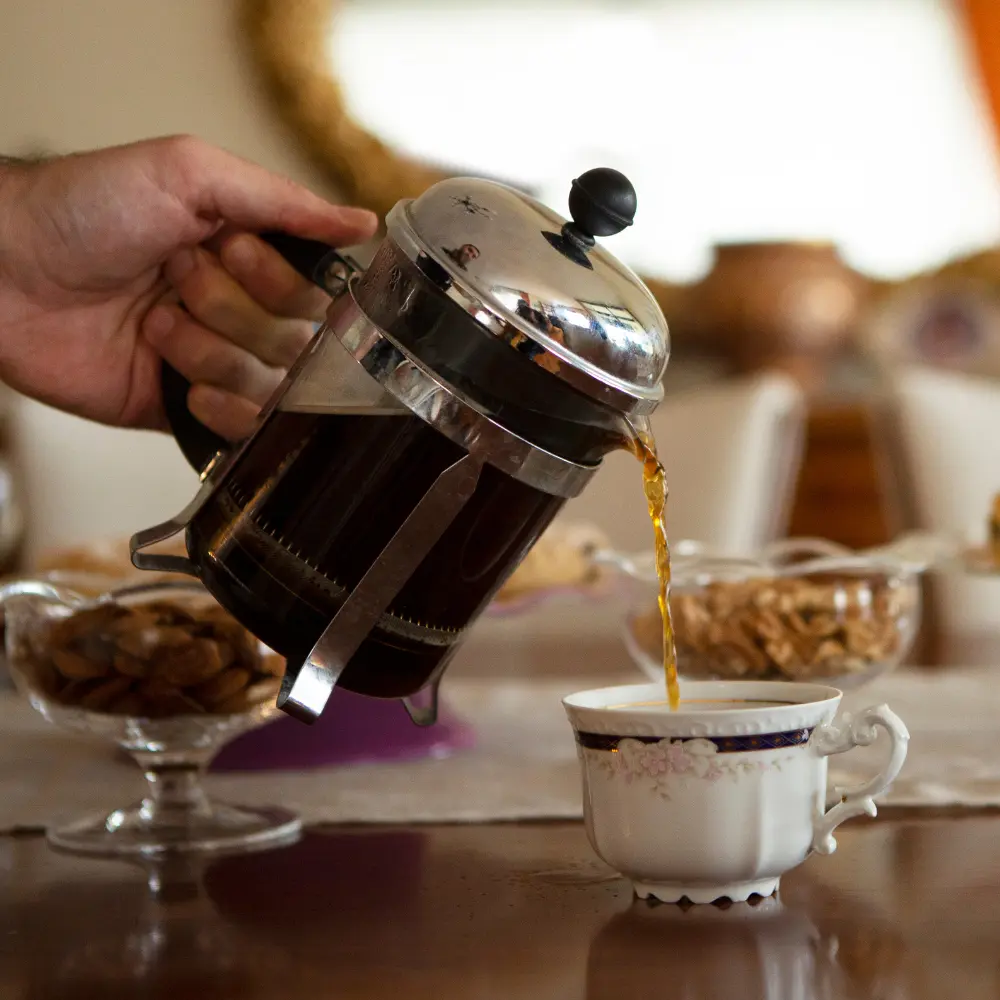
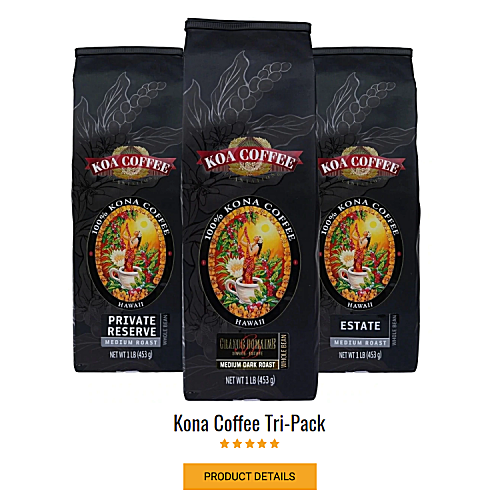


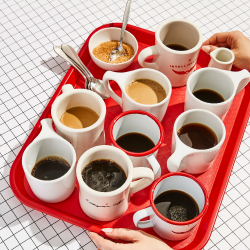

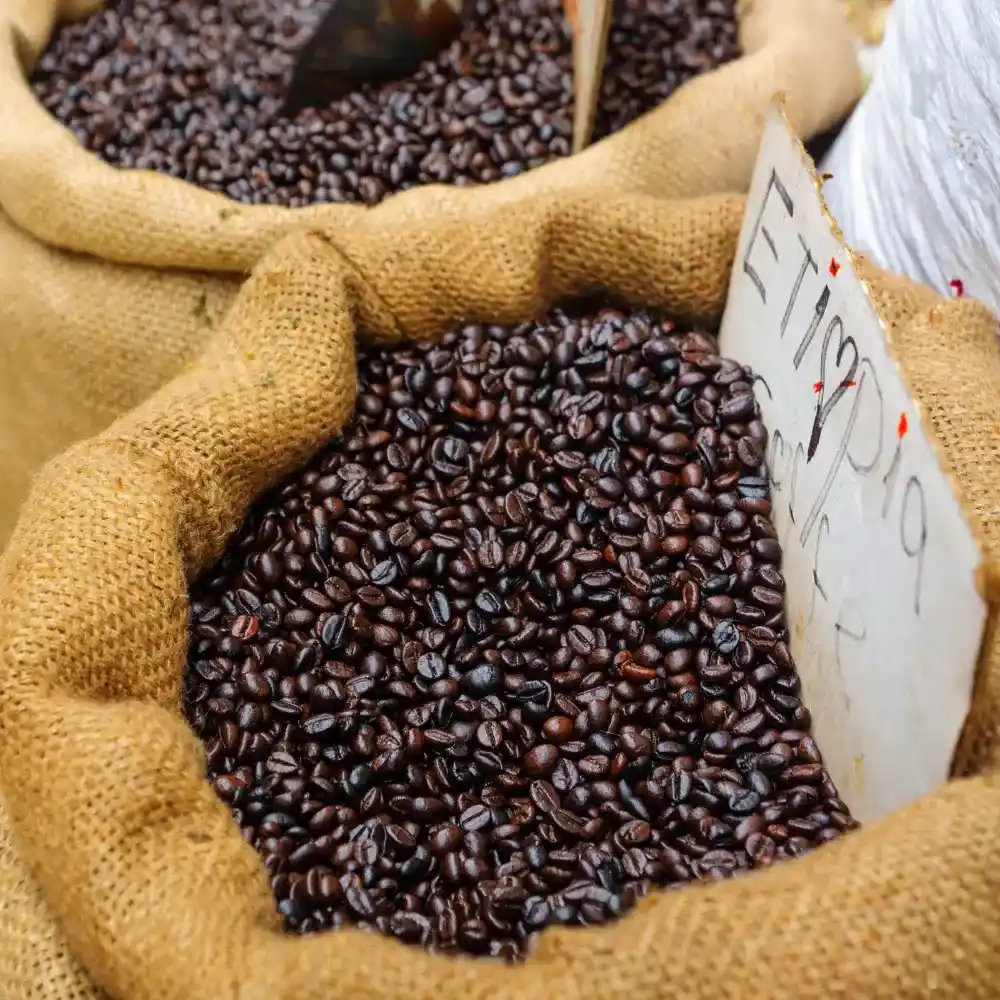









1 comment
This is a superbly written article by Val.
He’s made a difficult task seem easy through his writing style and fluid description of the nuances of coffee.
I would be delighted to share some of our coffees with him when you’re next in London. Would that be possible please?